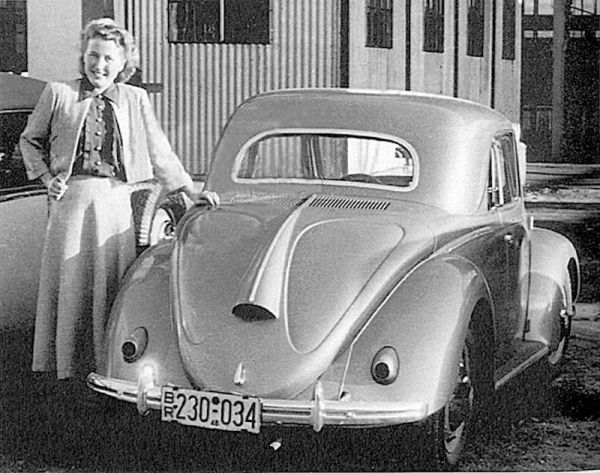KLAUS HEBMÜLLERS HISTORY CORNER
The history of Karosserie Hebmüller
"Qualität und Eleganz von 1889 bis 1952"
Joseph Hebmüller, son of a farmer in East-Prussia, since World War II part of Russia, finished a coachbuilder- apprenticeship in 1883. He did not see any chance to find an adequate job in that area, so he decided to move to the western part of Germany where the industrialization just had started. Finally he found a job in the town of Barmen – today part of Wuppertal – at a small coachbuilder company. At an age of 24 he got the chance to buy the little firm from his principal. This happened just at the time when he received his heritage, i.e. several hundred Gould-Mark. So Karosserie Hebmüller was born on October 15th, 1889. The young company manufactured commercial carriages for bakeries, butcheries, dairies etc. as well as elegant coaches. At that time, Friedrich Ebert, later on, i.e. after World War I, Reichspräsident of Germany, a professional uphosterer, worked for a while in Joseph Hebmüller’s shop. Even the area of automobiles had started already several years before, Joseph’s first body for an automobile originated from 1915. This was the real start for Hebmüller as an automotive coachbuilder company. Unfortunately, Joseph died in 1919 at the age of 54 years only. At that time his two eldest sons, Joseph jun. and Emil worked already in the company, so they took over immediately. Paul, the third son, studied to become a teacher, but his brothers convinced him to join them as they needed somebody to take care of the increasing paperwork . The youngest, Erich, made an apprenticeship as an upholsterer and there was no doubt that he followed his brothers a few years later. The 4 brothers concentrated their work successfully on automotive coachwork. Pullman-Limousines became a speciality, built on chassis from Austro-Daimler, Buick, Chrysler and other. First orders of small lots came from Körting, Mannesmann and Austro-Daimler. Most of the jobs, however, based on single individual orders for brands like Adler, Dixi, Fiat, NAG, Roehr, Stoewer, Wanderer etc. Due to the amount of orders the workshop at Wuppertal, Allee-Strasse 221, became too small.
In 1924 the Hebmüller-brothers bought a facility at Wülfrath- called Werk II, about 15km from the Wuppertal plant (Werk I). During the following years this plant expanded continuously. The Tornax Company from Wuppertal, well known manufacturer of motorcycles, developed a small roadster in 1934, the coachwork was done by Hebmüller. However the car was not so successful and production was finished after about 150 cars. Ford Motor Company of Cologne ordered a few hundred roadster of their Ford-Eifel type, beside of Pullman-Limousines on V-8 Chassis. The newspaper “Wülfrather Zeitung” wrote on 26.01.1935 that Hebmüller completed about 50 cars every month. In 1936 Hebmüller bought a 3rd factory, located in Wülfrath, Schulstrasse (Plant III). This plant was equipped for timber work as in those years most the bodies still had a wooden skeleton covered with formed sheet metal. Beautiful convertibles and roadsters on the base of Hansa, Hanomag-Sturm, Opel-Admiral and Kapitän chassis were created in the late 1930is. Among others the famous actress La Jana ordered an Opel-Admiral convertible at the Hebmüllers. During World War II the production of new civil vehicles was stopped. Passenger cars were changed into vans, some for military use, military transport vehicles were built as well as mobile workshop trucks and trailers. Wooden dummies of airplanes were produced as well as wooden barracks and containers in Werk III. Werk I in Wuppertal was almost completely destroyed by bombs in 1943, Werk II in Wülfrath was bombed twice in 1944 and 1945 and about 30% of the production area was destroyed. At the end of the war the US Army – later on the British – took over the command, mainly to repair their military vehicles. In 1947 American Military trucks were rebuilt for civil use and in early 1948 the British headquarter ordered 15 4-seat 4-door convertibles on Humber chassis. Due to the amount of orders the workshop at Wuppertal, Allee-Strasse 221, became too small. First civil orders came from the German Mail for light trucks on Opel chassis.
Ford ordered platform bodies for their trucks. Individuals brought their pre-war cars to get them modernized or rebuilt as no new cars were available on the market. Soon after the war motor racing competitions started all over the country. Pre-war cars had been modified, self-made designs – often based on VW military off-road cars – had been created. Hebmüller helped in several creations with forming aluminum parts and built a few complete race car bodies on VW and Veritas base. By the end of 1948 Hebmüller received orders from Volkswagen to design a 2-seat convertible as well as a police car. In 1949 and 1950 675 convertibles and 275 police cars had been produced, but no additional order – as promised previously – was placed. The 23rd of July 1949 became a real “black Saturday” for the Hebmüller brothers. Werk II, where the series production for the VW convertible just had started, burned down completely. No production anymore! With an tremendous effort – financially as well as psychologically – a new production facility of 2.300 square meters was erected up to Mid-September 1949, fully equipped to start production of VW convertibles. This, however, never was honoured by Volkswagen. Production was finished in April 1950. Parallel the main factory buildings were re-constructed and became ready for production between mid 1950 and early 1951. The new production complex was certainly the most modern coachbuilder factory in Germany at that time. New orders came from Opel, Hanomag and Tempo for commercial vehicles as well as from Borgward and DKW for Convertibles and Coupés. All these efforts – the reconstruction of the plant, new machinery, wages for the employees (nobody was layed-off during the production stop), the start of new models etc. – exceeded the financial possibilities of the Hebmüller brothers, moreover due to the fact that a promised loan of the State Government was finally not granted. So in May 1952, the company became insolvent. Production was continued for several month to complete the vehicles being under construction at that time.
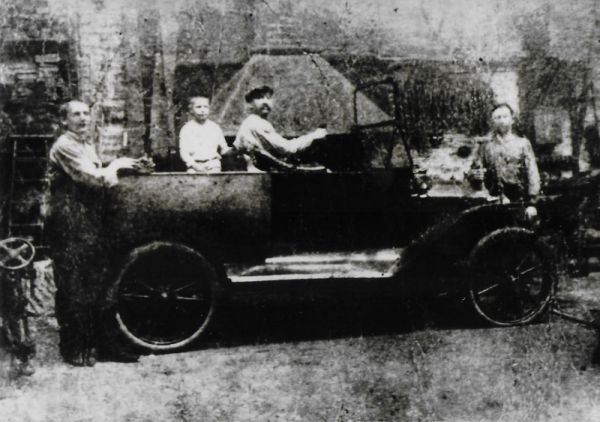
Brennabor coachbuild
29. May 1915: My grandfather Joseph Hebmüller senior behind the steering wheel of a converted Brennabor automobile. The young boy behind him is my father Erich Hebmüller.
VW Type 38 stop
On a promotion tour in 1938 a VW Type 38 stopped at the Hebmüller factory. The young woman on the left with the white work coat is Lieselotte Hebmüller. The VW Type 38 was car number twenty two.
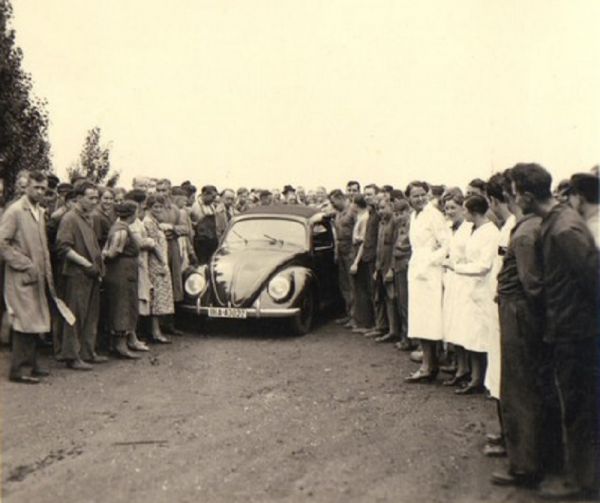
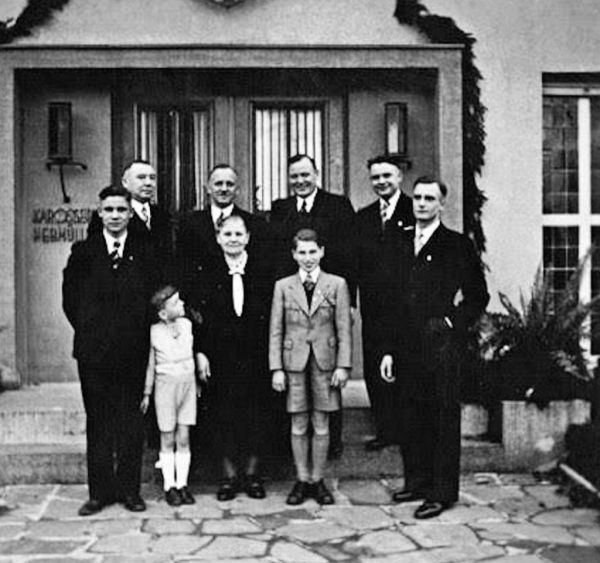
50th company anniversary 1939
From left:
Herbert Hebmüller, son of Joseph Hebmüller junior
Joseph Hebmüller junior
me as a young boy
Emil Hebmüller
Elisabeth Hebmüller, widow of Joseph senior
Paul Hebmüller
Karl Heinz Hebmüller, son of Paul Hebmüller
Erich Hebmüller, my father
Siegfried Hebmüller, son of Emil Hebmüller
Type 14A prototype break
On this picture you see one of our early protptype with a OPEL in the background. On the left is an apprentice boy and on the right Mr. Rath, one of the coachbuild mechanics.
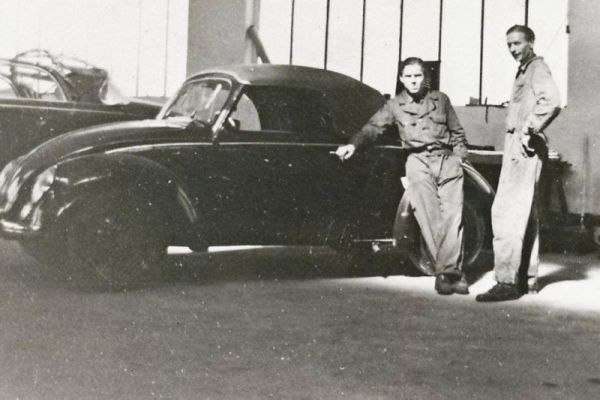
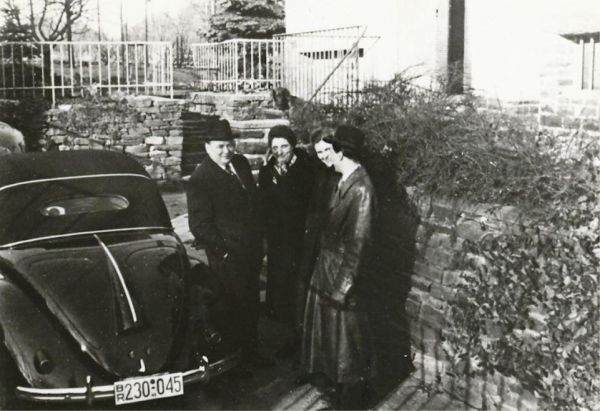
Sunday cruise
From left: Paul Hebmüller, Gerda Hebmüller (wife from Paul Hebmüller), Hannelore Rittersbach (daughter of a VW dealer in Kaiserslautern), Karl Heinz Hebmüller (son of Paul & Gerda Hebmüller)
Coupe trip to Kaiserslautern
In 1949 an employee and me, drove the Hebmüller coupe to Karl Heinz Hebmüller in Kaiserslautern. At this time Karl Heinz studied at the college for coachbuild engineering in Kaiserslautern. The coupe was build out of a burned Type 14a body after the factory fire.
From left: Theo Grote, Hannelore Rittersbach, Karl Heinz Hebmüller and me
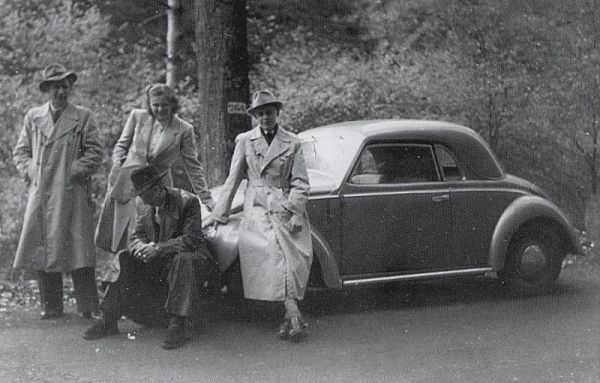
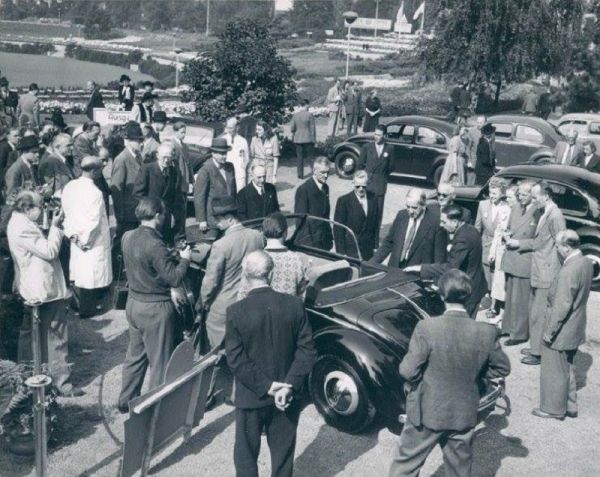
Automobile Show Berlin 1949
In 1949 Hebmüller showed the Type 14A VW convertible on the first motor show after the war in Berlin. The man with the cravat (right beside the passenger door) is the governing mayor of Berlin Mr. Ernst Reuter.
Hebmüller Veritas model
Here you see Herbert Hebmüller (second from left) and Paul Hebmüller (third from left), working on a Veritas model
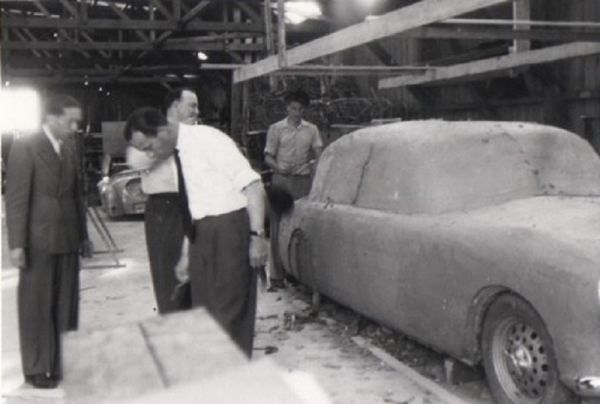
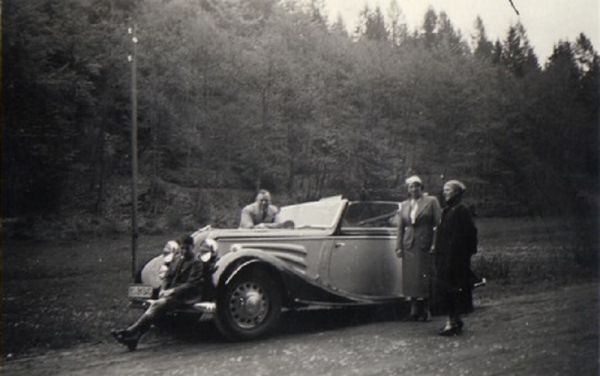
Hanomag Sturm test drive
from left:
Karl Heinz Hebmüller
Paul Hebmüller
Gerda Hebmüller
Back after over 30 years
Paul and Erich Hebmüller visited the old Wülfrath factory in the eighties
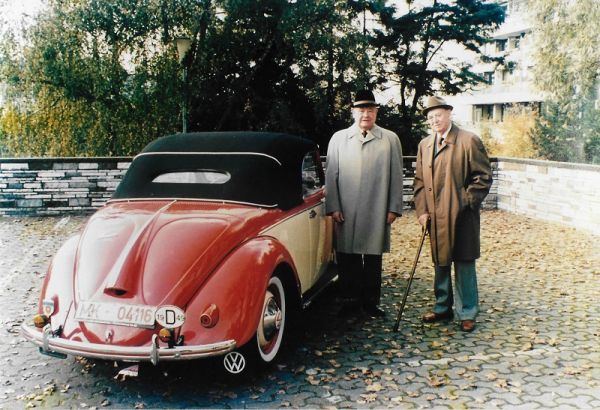
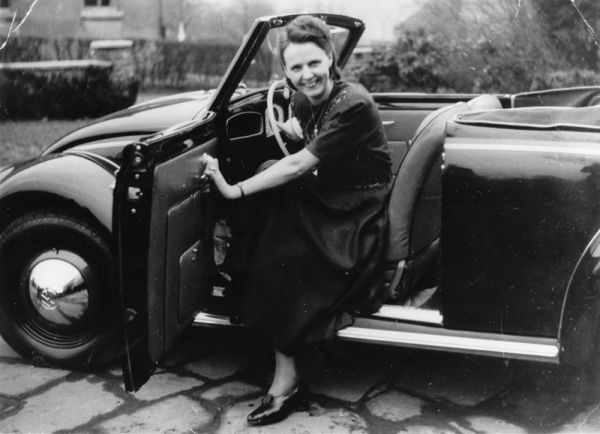
Lieselotte Hebmüller June 1949
Here you see Lieselotte Hebmüller posing in the brand-new 14-00005 pre series Type 14A at the factory in Wülfrath
Lieselotte Hebmüller 2002
At the 100.000 km Volkswagen Meeting in Hückeswagen in 2002, Lieselotte Hebmüller had a seat in a Type 14A again. Many thanks to Jan Peter Henkels for this nice idea and the great picture.
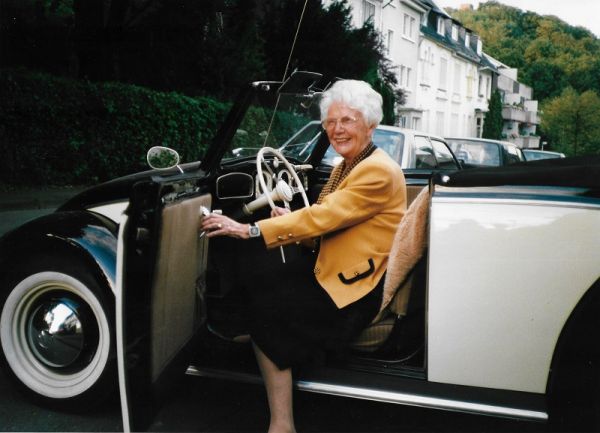
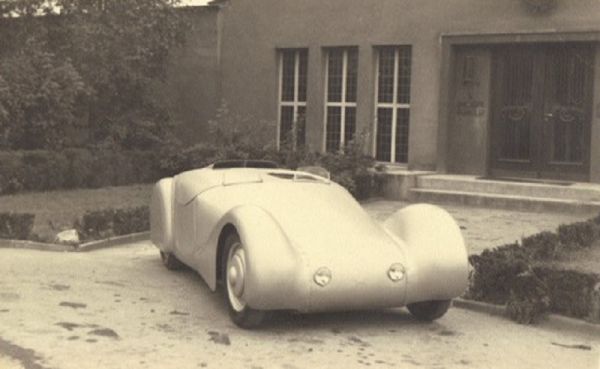
Private race car
On this picture you see Gottfried Vollmers VW chassis based race car. Hebmüller build this unique car in 1948 for the tobacco dealer. Under the aluminium body shell is a very light tube frame.
Type 14A Coupe
Here you see the nice Type 14A Coupe with Lore Wittenschläger. She worked in the office of the Hebmüller factory.
